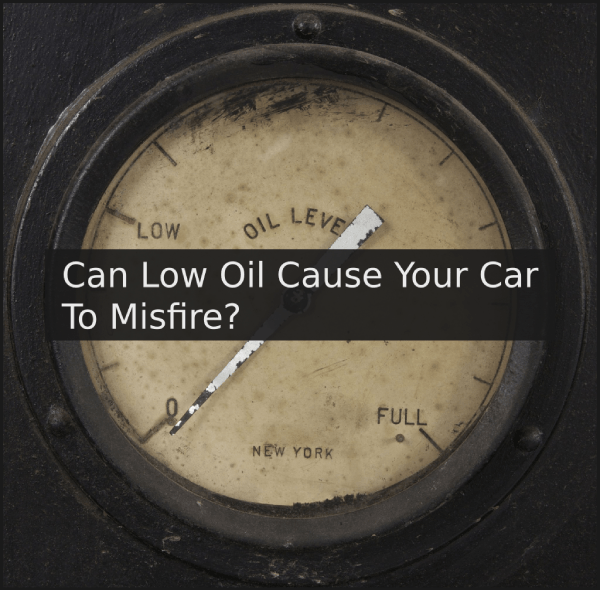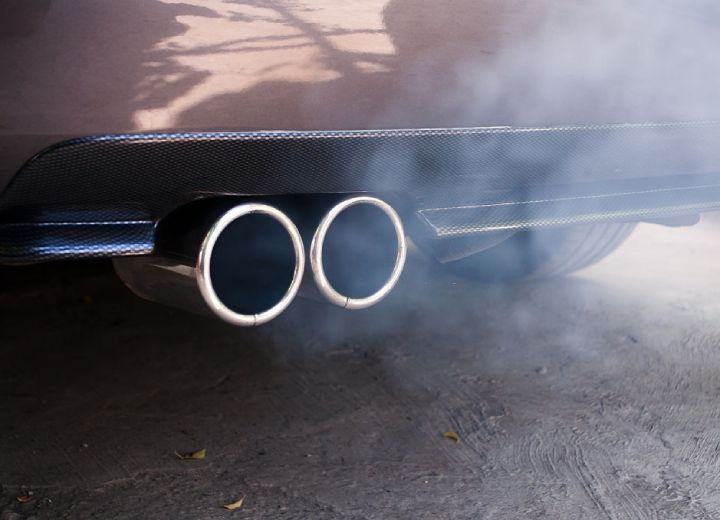Engine misfiring occurs when an automobile’s internal combustion engine does not fire properly upon ignition. Misfires manifest in various ways, which include the engine light blinking, reduced power or acceleration, poor performance and stalling, and blue smoke from the tailpipe.
When the oil level in your car is low, the oil pressure might drop and the car can start to misfire. In most cases you can fix the problem by topping up your oil level, but you should investigate what is causing the level of engine oil to drop.
What Are the Main Causes?
Let’s see what can be the root of your problem. What can cause the low oil issue that might result in your vehicle misfiring.

Worn valve guide seals and guides
Worn valve guide seals and guides typically cause a misfire, but it can also be caused by worn rings and cylinders that allow oil to enter the combustion chamber.
A spark plug replacement will fix this problem, but worn valve seals and guides are more likely to be the root of oil consumption. This means that the camshaft, lifters, and timing chain must be replaced before the oil consumption problem can be fixed (or gears).
Damaged/Old oil filter
Your oil filter is damaged, reducing oil flow, causing improper valve timing, and resulting in a misfire. The engine’s performance may have changed, along with the rattling noise, because the oil filter has become so clogged up with contaminants that it won’t allow oil to flow, causing the engine to misfire.
Decreased oil flow
Decreased oil flow has worn down your engine parts, causing a misfire. The oil can deteriorate in cleanliness more rapidly than usual. As a result, it can thicken and seep through worn seals into the engine’s crankcase, where it doesn’t belong.
Low oil pressure
Low oil pressure has caused your engine to run out of fuel, dropping the RPMs and causing a misfire. Your pressure might drop to zero, indicating a possible oil leak. This should be investigated immediately as depending on the size of the leak, you risk damaging the engine. We have put a more detailed guide explaining when and for how long you can drive with an oil leak.
How to tell if your oil level is low?
Before opening the hood to assess the oil, ensure the vehicle is parked on a horizontal plane and the engine is cold to prevent getting burned. Find the oil dipstick by opening the hood when you come to a stop. According to some manufacturers, the oil should be checked after the engine has warmed up. To ensure you are following the right procedure for your vehicle, you might want to check your car’s owner manual.
After removing the oil dipstick from the engine, the end should be cleaned using a piece of cloth or paper. Once you’re done, put the dipstick back into its housing and press down firmly to seal it completely. Removing it allows you to check the oil level from either end of the dipstick. Whether it’s two pinholes, an L and H for “low” and “high,” the abbreviations MIN and MAX, or a cross-hatched area, every dipstick has a way of showing the correct oil level.
Check the level by placing the top of the oil “streak” between the two marks or within the crosshatched area. On the contrary, if the oil level is below the minimum mark, you must top-up your oil level immediately.
However, it’s not always obvious when your car’s oil level suddenly drops. Nevertheless, there are usually telltale symptoms that can be used to get past a low oil problem much more quickly if you know the signs to look out for.
- The engine light may come on or stay on when you ignite your car or step on the gas while driving. In this case, either drive more slowly than usual until the problem is resolved if you are typically driving, or use less gas and increase the idle speed for better performance in economy mode.
- There could be noise from the engine and a metallic odor if not enough oil is in the crankcase.
- Black smoke or engine soot.
- The engine sputters when you start the car or step on the gas.
What should you do?
Top-up Engine Oil
Ensure the vehicle has the right amount of oil, not too much or too little. Oil-level sensors and dipsticks help keep track of this in vehicles. Although manufacturers advise letting the engine cool down and the oil settles into the oil pan before taking an accurate oil reading and checking for any oil leaks, the dipstick in many newer vehicles has been improved to be used accurately even when the engine is hot.
Nevertheless, a precise reading can only be obtained if the vehicle is parked on a level surface. Adding more oil to the engine can easily fix the low oil pressure caused by a lack of oil. You should use the oil type recommended by the manufacuturer. It is good to have consistent synthetic or partially synthetic composition, manufacturer, and SAE quality standards.
A funnel can be very helpful if you want to avoid getting oil on your engine, other components, or the floor. Adding oil too quickly can damage the engine, so take your time. Put in half a quart first. If you want to keep things from spilling, use a funnel. Check the dipstick again in a minute or so. Add the remaining half of the quart if the water level is below the minimum.
It would be best if you didn’t have to add more than a quart of oil unless your engine is leaking or burning oil or you haven’t checked it in a while. If a second quart is needed, add it gradually while stirring.
Check For Any Oil Leaks
Although most modern cars will have an oil warning light indicating when your car is low on oil, there are some older vehicles that do not come equipped with this feature. Instead, they might have an oil pressure gauge that will indicate a drop in pressure if there is a leak.
The oil light might illuminate only when the vehicle is moving, and because of this, many drivers ignore it, without taking into consideration that their car might be leaking oil. Another sign that you should look for is a strong smell of burning oil through your car’s vents.
Lastly, if there is a major oil leak, you should be able to notice marks on the ground whenever the car has been parked for a while.
Ensure You Use The Right Oil
Engine oil shares this property with other oils and is the right viscosity. The oil’s viscosity plays a significant role in ensuring the engine functions optimally. When purchasing motor oil, you may have seen “5w-30” or “15W-30” on the container. Grades are in the SAE system. These numbers indicate the relative thickness of the oil. In the past, only one number was used to describe their consistency; for instance, “SAE 30” referred to a fairly thick oil. Oil becomes thinner when exposed to heat, so manufacturers had to make the oil thicker to get the right viscosity for engine lubrication at operating temperature.
Each car and engine manufacturer has recommended a certain viscosity. Using the recommended viscosity to keep your oil pressure from dropping would be best. In addition, the type of oil you should use depends on the weather.
If you are in a colder region, your zip code should start with a lower number and end with a “w” for winter. If you aren’t sure what kind of oil your engine needs, it’s best to check the owner’s manual or ask a local authorized dealer or mechanic.
Do Your Oil Change on Time
It is mandatory that you change your oil and oil filter on time. The oil goes through a filter to remove any impurities before sending it to the engine. Unfortunately, the filter clogs up over time as it removes these pollutants.
As the filter becomes clogged, the oil will have a reduced flow rate causing the oil pressure to drop.The oil filter needs to be replaced for this problem to be fixed. Remember that if you keep up with your car’s maintenance, you can avoid this issue altogether. Always stick to the vehicle maintenance schedule shown in the owner’s manual.
Will an oil change stop the car from misfiring?
No, changing the oil won’t fix a misfire. If the issue is caused by worn-out components (such as valves or rings), changing the spark plug usually takes care of it. However, this doesn’t take care of engine issues like camshaft and timing chain problems, which can also result in a misfire. Check for damage to the spark plugs.
To remove the plugs and get a good look at it, use a spark plug socket. A close inspection if your plugs will tell if this is the cause of the misfire. Replacing the spark plugs might fix the issue. Ensure that new spark plugs are replaced and gapped correctly.
Can an overdue oil change cause a misfire?
In the long run, yes. A misfire is an electrical issue, whereas a mechanical issue is one caused by an oil issue. There wouldn’t be a mechanical issue if the oil level wasn’t dangerously low. Nevertheless, a lack of oil changes for a long time will cause carbon and sludge to clog the pistons’ tiny oil return holes. This will result in oil spilling into the piston.
Consequently, consumption is made worse. Consumption gradually rises until oil eventually clogs the spark plugs and results in a misfire. Things only get worse until the engine stalls due to a blocked catalyst.
Every since I was a little boy, I can remember spending the afternoons in my dad’s repair shop. I got my first car at 16 and it was the best feeling ever!
I have contributed to various automotive publications but decided it’s finally time to settle for something constant.








